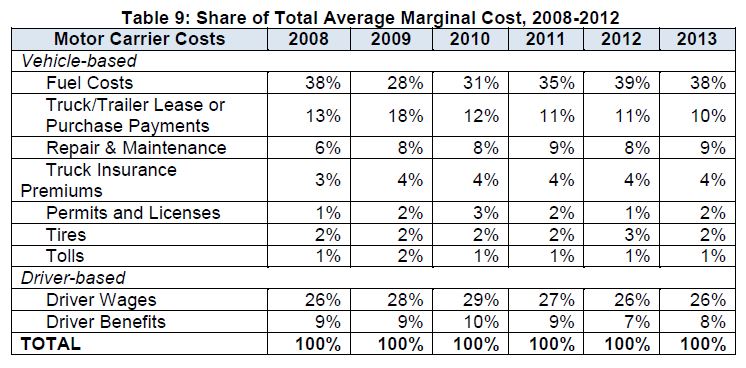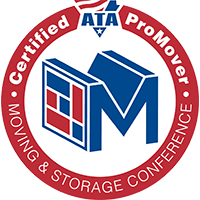How much does it cost?
This may be the most popular question in the English language (or a close second to “What’s for supper?”) Everything, it seems, has a cost. Human nature wants to know the precise impact on the pocketbook.
For instance, take the cost of moving. No two families are exactly alike, and no two household moves are exactly alike. Every move, theoretically, has its own unique cost.
To get an understanding of what goes into this cost, consider for a moment that big rig rolling down the highway. Each power unit (industry-speak for truck), represents the primary workhorse for transporting goods. There are other expenses, of course: rents for warehouses and offices, computers, payroll for supportive services, insurance, etc. But the tractor trailer and its Professional Van Operator represent the heart of the moving service—and the most significant portion of every move’s cost.
 From “An Analysis of the Operational Costs of Trucking: 2014 Update.” American Transportation Research Institute. September 2014.
From “An Analysis of the Operational Costs of Trucking: 2014 Update.” American Transportation Research Institute. September 2014.
When you look at motor carrier costs in the industry, you see nine different components. Seven of these are vehicle-based. The largest single cost component is fuel, which accounted for 38 percent of the total. It takes a lot of energy to move a big rig down the road—and the more weight it pulls, the more energy it consumes. Fuel cost is followed by driver wages (this includes helper wages for moving companies). Together, the two account for 64 percent—almost two-thirds—of total motor carrier cost.
Diesel fuel prices peaked earlier this year, but have since moderated. This is due to a softening global demand for crude oil and an increase in domestic production of energy. However, the cost of crude oil accounts for just 58 percent of total diesel cost (based on $3.79/gallon). Taxes (13 percent), distribution and marketing (17 percent) and refining costs (12 percent) make up the rest. So, dramatic price drops in crude oil don’t correlate to equally dramatic price drops at the pump.
While market forces may allow energy costs to occasionally recede, the cost of putting a professional behind the wheel shows no sign of abating. For starters, top professional van operators are in high demand. But the pipeline for new drivers is far from full. It’s a simple matter of supply and demand. But the solution will be anything but simple.
In a report recently conducted by Atlas World Group the average cost of operation for a moving company has increased over 35% since 2009. The total tariff increase (the amount moving companies are legally permitted to charge) has risen about 5% during this same period.
Check out The Cost of Running a Big Rig infographic from Atlas Van Lines.
Tags
Subscribe to Weleski Transfer Inc's Blog










Comments